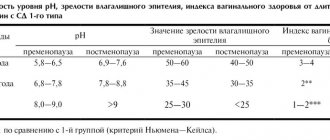Armed with advanced scientific achievements
Patients suffering from Martin-Bell syndrome are usually distinguished by intellectual underdevelopment, characteristic speech, increased aggressiveness, and disinhibition.
Oligophrenia-like or schizophrenia-like symptoms are sometimes observed. Treatment of fragile X syndrome in Israel is based on the use of the latest achievements of world medicine. Drug therapy:
- Use of glutamine receptor antagonists mGluR5. This group of new drugs most effectively alleviates the symptoms of the disease. Currently, drugs from this group are undergoing clinical trials;
- Psychotropic drugs (psychostimulants, antidepressants, serotonin reuptake inhibitors) help combat individual deviations in the patient’s mental state;
- Lithium-based drugs show good effectiveness and improve behavioral functions, verbal memory and the ability to socially adapt;
- In Israel, an active search is underway for new drugs to combat the consequences of fragile X syndrome. For example, clinical trials have shown that some antibiotics exhibit neuroprotective properties and can alleviate the symptoms of Martin-Bell syndrome.
Non-drug therapy:
- Cognitive behavioral therapy is aimed at preventing psychological disorders and improving cognitive functions;
- Classes with a speech therapist help get rid of speech disorders;
- Genetic consultation allows you to assess the risk of the disease in families with cases of Martin-Bell syndrome.
Thanks to the use of the latest advances in pharmacology, genetics and psychotherapy, doctors at Top Ichilov Hospital help patients with fragile X syndrome to significantly improve their condition. Treatment of fragile X syndrome in Israel allows you to reduce the symptoms of the disease and return to a full life.
Typically, Martin-Bell syndrome affects males. The disease is named after Martin and Bell, the doctors who first described the disease in 1934. Martin and Bell studied a UK family in which 11 men were diagnosed with mental retardation. According to statistics, fragile X syndrome occurs once in every 1,500 newborn boys.
Symptoms and types of epilepsy
First of all, the clinical picture of epilepsy is associated with convulsive or non-convulsive seizures.
Depending on the location of the focus of pathological excitation, attacks can be focal (focus in one hemisphere) or generalized (spread of pathological excitation throughout several structures of the brain). Convulsive attacks of epilepsy can be partial (convulsive twitching of a part of the body) or generalized (general convulsive attack). The latter are accompanied by urinary and sometimes fecal incontinence.
An epileptic attack may have an aura - well-known precursor sensations to the patient on the eve of the attack. These may be special sounds, smells, tastes, visual illusions or emotional changes. Sometimes the aura is difficult for the patient to describe, but he feels it well. Vegetative manifestations and loss of consciousness are possible, not accompanied by convulsions - such an attack is called absence seizure.
Focal epilepsy (also known as Jacksonian epilepsy) is characterized during a seizure by the repetition of monotonous movements of the fingers, hand or foot, facial grimaces, phonatory convulsions, that is, a cry, involuntary sounds against the background of switching off consciousness (motor Jacksonian epilepsy), paresthesia, turning the head or eyes, flashes light in the eyes, visual, olfactory or auditory hallucinations (sensory Jacksonian epilepsy).
Motor attacks - convulsions - can be:
- clonic (convulsions of large muscle groups, “epileptic arc”);
- tonic (contractions of small muscles, monotonous movements);
- tonic-clonic (freezing in one tense position, followed by muscle twitching);
- myoclonic (weak muscle twitching, tics);
- hypermotor automatisms (externally organized, repetitive movements);
- epileptic spasm (flexion and extension of a violent nature).
The mental equivalent of an epileptic seizure resembles the “amok” known in fiction.
Suddenly the patient falls into angry psychomotor agitation, his actions are outwardly ordered, but his consciousness is deeply darkened. During an attack, the patient may leave in an unknown direction, get lost, attack someone, and even kill. The attack ends on its own after a few minutes. The patient regains consciousness, breathing normalizes, and muscles relax. Excitement gives way to inhibition, sometimes the patient falls asleep.
First aid for epilepsy comes down to gently fixing the patient's head so that he does not harm himself during an attack. No objects should be inserted into the oral cavity, since convulsive clenching of the jaws with this object can knock out teeth. After the patient comes to his senses, it is advisable to create a calm environment for rest.
The most dangerous variant of an epileptic attack is status epilepticus. This is a life-threatening condition that requires emergency medical attention. Status epilepticus is a series of convulsive attacks during which the patient lacks consciousness and normal breathing. Absence seizures - non-convulsive seizures - can also develop into status epilepticus, called epileptic stupor. The patient freezes, immersed in himself, not reacting to external stimuli.
Epilepsy is often accompanied by personality changes: pedantry, rigidity, depressive episodes and anxiety, and the inability to separate the important from the unimportant.
Epilepsy in children has age-dependent forms:
- idiopathic focal epilepsies of infancy and childhood;
- benign familial neonatal seizures;
- myoclonic epilepsy of infancy;
- childhood or juvenile absence epilepsy;
- juvenile myoclonic epilepsy.
If epilepsy in children begins at an early age, encephalopathy (epileptic or developmental encephalopathy) often develops with behavioral, thinking and neurological disorders. The first is most likely in severe attacks that begin in childhood, the second is a genetically determined mental disorder of early age, including thinking defects and autism spectrum disorders (sociopathy, stereotypies, speech disorders).
Diagnosis of fragile X syndrome
Methods for diagnosing Martin-Bell syndrome are based on the use of cutting-edge equipment and the results of the latest scientific research:
- Restriction endonuclease (a method that allows DNA to be split into specific sections);
- Southern blotting (molecular research method based on DNA fractionation);
- Study of repeats of CHG trinucleotides in DNA by polymerase chain reaction.
Specialists at the Top Ikhilov Medical Center have learned to diagnose Martin-Bell syndrome with high accuracy - both in children and adult patients. The Israeli Ministry of Health pays great attention to the development of genetics, so treatment of fragile X syndrome in Israel is based on the most modern achievements of this science.
- 5
- 4
- 3
- 2
- 1
(1 vote, average: 5 out of 5)
Consequences of epilepsy
Epilepsy is a chronic disease that remains with the patient throughout his life.
The risk of premature death associated with injuries from falls, drowning, thermal injuries, and status epilepticus (a long series of attacks with breathing problems) increases. In addition to the clinical symptoms, a person faces the social and psychological consequences of epilepsy. It is a highly stigmatizing disease that reduces the quality and length of life. In some countries, epilepsy is grounds for dismissal or divorce. The vital activity of patients is reduced for fear of being injured during an attack. Epilepsy prevents you from occupying certain positions and driving vehicles.
ZPRD with elements of autism
As a result of malfunctions of the central nervous system or the impact of severe infections on the child’s body, not only speech and mental development delays can form: in some cases, the disease is accompanied by signs of autism.
Autistic traits in a child’s behavior:
- Does not enter into emotional contact with people, does not smile, does not reach out to parents.
- Prone to frequent attacks of aggression, when he is dissatisfied with something, he can direct this aggression towards himself (biting himself, hitting himself).
- Stereotypical behavior: may sway for a long time in one place or walk in a circle, twirl one object in his hand, tends to place objects in a row, reacts negatively to any changes.
- Does not know how to play with toys, uses them in his own way, may be committed to only one toy or part of it.
- Avoids society, does not know how to interact with peers.
Inheritance
Genetics classify this disease as a group of pathologies linked to sex, that is, to the X chromosome. In men, the disease manifests itself more often and more clearly, since their genotype contains one X chromosome. In women, pathology develops in the presence of both “pathological” X autosomes. Very rarely, a man can have a premutation variant and be a carrier. Women are much more likely to act as carriers of the disease, and they pass on the “pathological” chromosome with equal probability to both daughters and sons. A sick father can pass on the X chromosome only to his daughters. The inheritance of the syndrome gradually increases from generation to generation, which is called the Sherman paradox. The clinical course of the syndrome is much more severe in men.
Delayed motor development - MSD
This type of deviation appears already in the first year of a child’s life. And it is noticeable quite clearly. While other children begin to hold their head up, sit, stand, and walk, a baby with mental retardation does not do all this. The causes of MR are delayed motor development.
If a little person’s motor system is developing well, he does everything listed on time or even earlier than normal. What is the cause of problems with motor functions?
There are several of them:
- Hereditary factors
- Parents' health status
- Perinatal problems - injuries, stress, illness, bad habits, poor nutrition and difficult working conditions for the expectant mother
- Birth abnormalities - premature birth, rapid, protracted, postmaturity, prematurity, birth injuries
How is the cause of RRR determined?
In order to cure a disease, you need to know exactly why it appeared. The cause of a delay in speech development in a child can be determined by conducting a comprehensive examination of him with doctors of traditional medicine; naturopaths do not need all examinations, but it will not hurt to undergo them.
Pass special testing to determine whether the child’s skills correspond to his age.
Bayley Scale Early Language Development Scale
Denver test Have your hearing checked by an audiologist Determine facial motor dysfunction - difficulty swallowing Compare the processes of understanding speech and producing it Analyze the ways adults interact with a child Determine how well the brain works using MRI, EEG and other methods See a child psychologist and psychiatrist and also visit a speech therapist and neurologist
Causes of mental retardation
- hereditary factors, including pathology of the generative cells of the parents (this group of oligophrenia includes Down's disease, true microcephaly, enzymopathic forms);
- intrauterine damage to the embryo and fetus (hormonal disorders, rubella and other viral infections, congenital syphilis, toxoplasmosis);
- harmful factors of the perinatal period and the first 3 years of life (asphyxia of the fetus and newborn, birth trauma, immunological incompatibility of the blood of mother and fetus - conflict over the Rh factor, head injuries in early childhood, childhood infections, congenital hydrocephalus).
Variants of manifestations
The number of cytosine-guanine-guanine repeats determines the various clinical manifestations of Martin-Bell disease. The syndrome may have hidden forms. If the test reveals between 55 and 200 repeats, a premutation occurs—borderline changes that make a person a carrier, but without visible changes in the nervous system. In adulthood and old age, ataxic syndrome and primary ovarian failure in women can develop. In this case, the probability of transmission of the syndrome is high. An intermediate state is also distinguished - this is from 40 to 60 nucleotide repeats, which does not manifest itself clinically and can manifest itself through inheritance after several generations.






